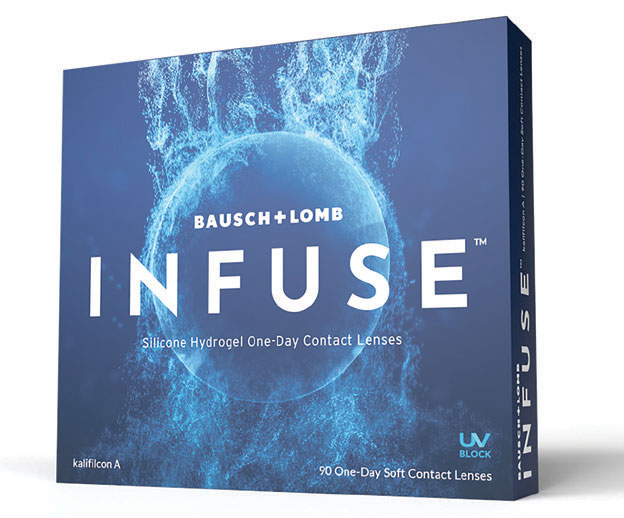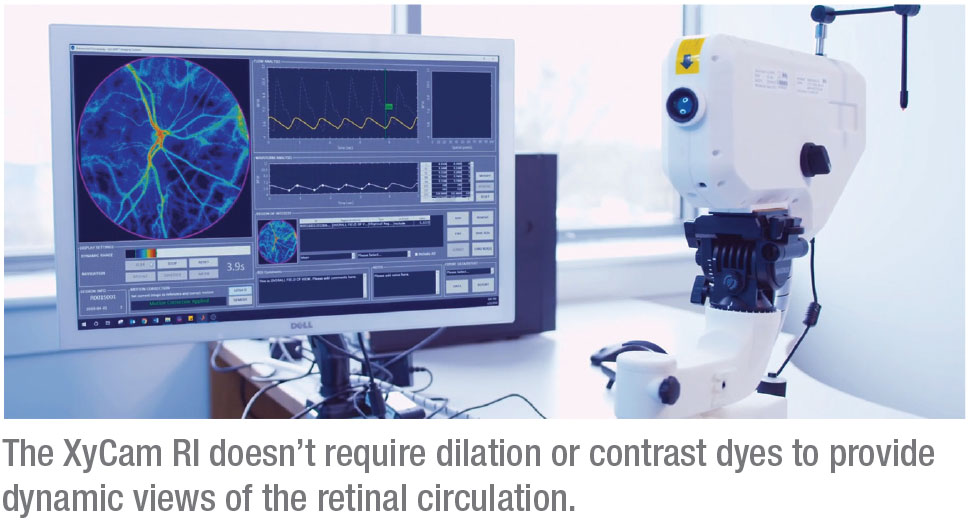 |
If you’re looking for assistance with placing IOLs in eyes with little or no capsular support, Bausch + Lomb says its new 25-gauge Scleral Fixation Forceps, part of the company’s Pinnacle 360 instrument line, can help. The new device aids in the placement of scleral-sutured posterior chamber lenses, the company says.
As with all B+L Pinnacle 360 instruments, the new forceps feature ergonomic 360-degree actuation and glare-free tips that undergo a patented fine-wire process to create microserrated edges that promote traction, B+L says. For information, visit
bauschretina.com.
Catalys Upgrades Its Software
Johnson & Johnson Vision recently collaborated with Cassini Technologies on a software upgrade that helps make managing astigmatism easier for users of J&J’s Catalys femtosecond laser. The companies say the new software simplifies astigmatism management workflow and increases operational efficiency.
The improvements include advanced visualization that provides full-volume, 3-D, high-resolution and streaming optical coherence tomography imaging, a built-in nomogram for arcuate incisions, and the addition of iris registration for automatic cyclorotation compensation, the companies say. For information, visit jjvision.com.
Ngenuity Improves Your View
Alcon recently launched an upgrade for its heads-up 3-D viewing system, Ngenuity. The company says the system’s 1.4 upgrade streamlines the setup for Datafusion, (which integrates the company’s Constellation vitreoretinal surgery system with Ngenuity), and allows retinal surgeons to track surgical parameters in real-time. The company says the upgrade also supports operating-room spacing and setup to minimize the risk of spreading coronavirus.
This latest version of the Ngenuity System will also be available for the anterior segment in late July, the company says.
The new features for cataract surgeons will include a display of the Centurion Vision System’s surgical parameters for real-time surgical feedback, as well as a view of the data from the ORA VerifEye+ intraoperative aberrometer and the aberrometer’s reticle.
For more information on the Ngenuity, visit https://professional.myalcon.com/vitreoretinal-surgery/visualization/ngenuity-3d-system/.
An Infusion of Lens Comfort
 |
Bausch + Lomb recently received U.S. Food and Drug Administration approval for its new daily disposable silicone hydrogel (SiHy daily) contact lens, the B+L Infuse.
The company says the new contact lens is composed of a next-generation lens material it calls kalifilcon A. Bausch says kalifilcon A is designed to help contact lens wearers who usually complain of contact lens dryness.
The company says that the lens makes use of B+L’s latest proprietary contact lens technologies to offer “outstanding breathability for healthy lens wear while providing exceptional all-day comfort and high-definition optics.”
The new Infuse contact lens is expected to be available in the second half of 2020, according to the company.
New Blood in Retina
If you’ve been searching for a new way to visualize retinal blood flow, the new XyCam RI from Vasoptic Medical may be worth a look.
 |
The company describes the device as a non-invasive retinal imager designed to capture and provide dynamic blood flow information for clinical use. It doesn’t need contrast dyes or pupil dilation to get an image, and the company says it uses a less-intense light source than some other units in order to make the exam easier for the patient. Vasoptic adds that the XyCam RI enables ophthalmologists to rapidly assess the vascular status of the retina. For more information on the XyCam RI, visit vasoptic.com.
Supplement Your Patients’ Eye Health
MacuHealth recently announced a new patented carotenoid formulation for use in its nutritional supplement formulation of lutein, zeaxanthin and meso-zeaxanthin. The new upgrade is called Micro-Micelle Technology.
The company says the enhancement, which is actually a formulation process, increases the bioavailability levels of nutrients in the eye. MacuHealth explains that, by providing the carotenoids in their free form (the original MacuHealth product) and then enhancing their stability and solubility via the addition of acetates, the carotenoids are effectively incorporated into micromicelles. The company says that the result is an increase in the capture of carotenoids by cells, an improvement in absorption and bioavailability and an ultimate increase in carotenoid concentration in the target tissue.
MacuHealth says that this effect was borne out by its recent study that found that patients receiving the new supplement showed “statistically significant improvements in carotenoid concentrations at the target tissue (by Macular Pigment Optical Volume) and skin carotenoid scores.” For information about the new supplement, visit macuhealth.com. REVIEW




